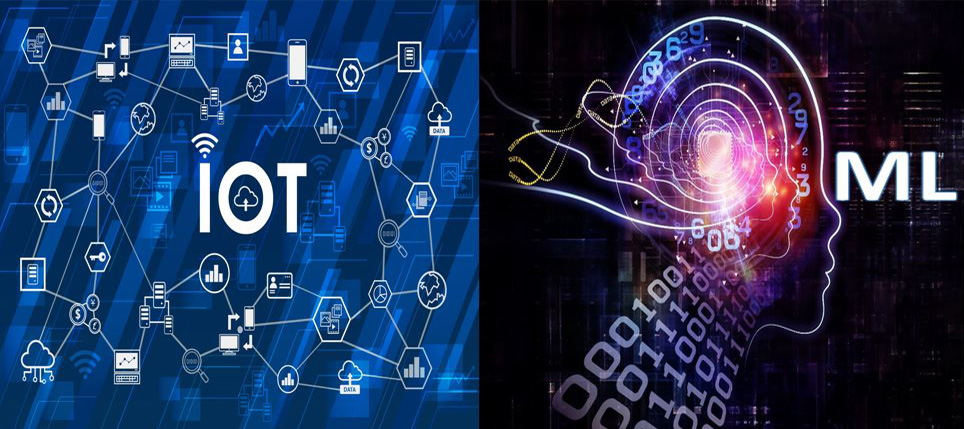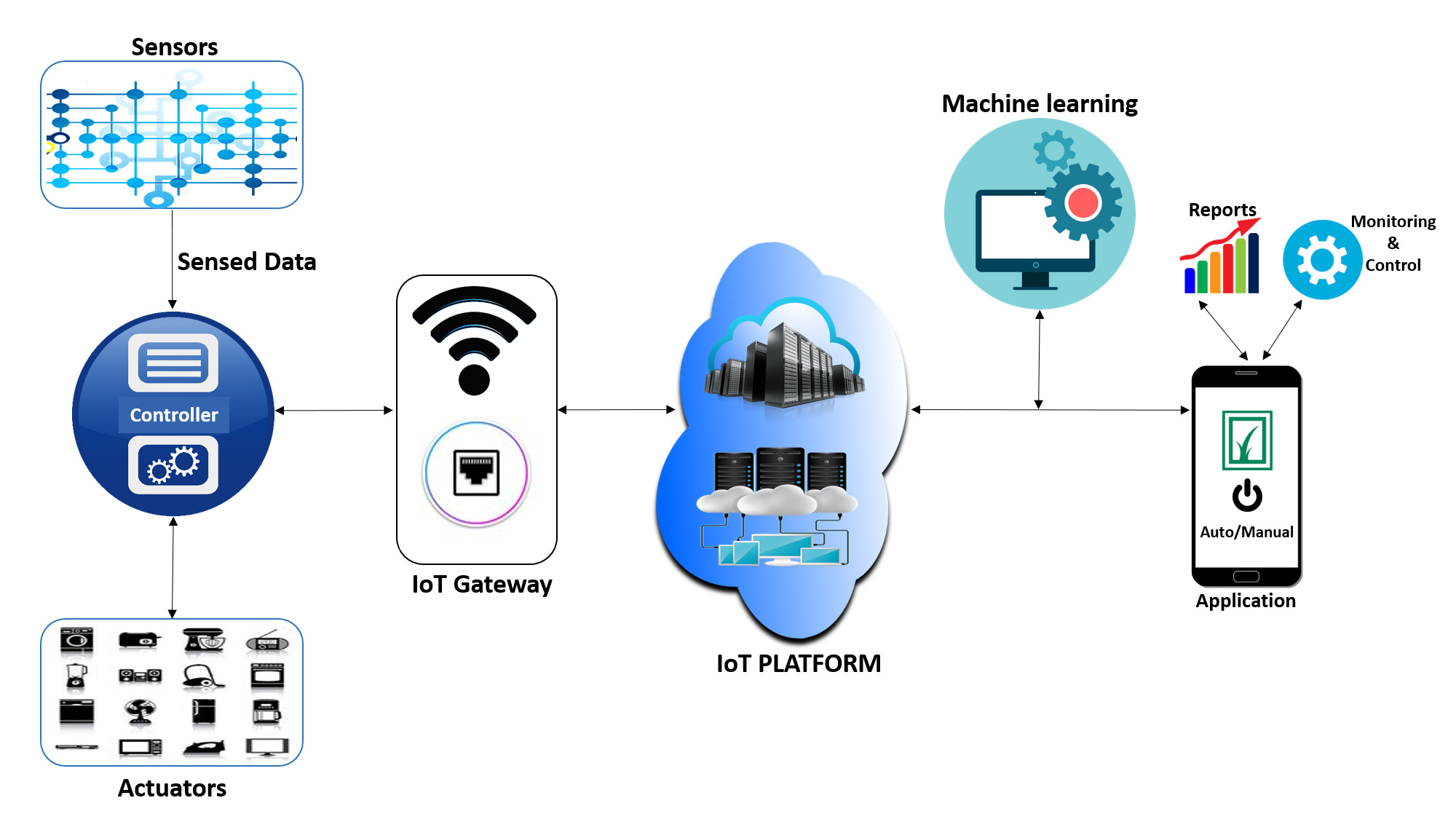
IoT & ML have been the buzzwords in recent years. Many of the applications that use the caption “smart” apply both IoT and ML. Though there exist several definitions for IoT. Our favourite definition is, the Internet of things is a combination of hardware components that enables data generation and transfer by various devices such as fans, lights, ovens, grinders, boilers, sensors etc for remote monitoring and control. IoT avoids human intervention in performing a task, especially generating data and storing it in the cloud.
Similarly, machine learning can be defined as the intelligence in drawing insights from data and finding patterns in it. Commonly referred to as the subset of AI (Artificial Intelligence), machine learning is driven by data. From the definitions, it is evident that data is the trivial element in both technologies.

IoT is often perceived as an approach to integrate devices or components such as sensors, controllers, and actuators. We believe, IoT is not just a device, it's also about the data that comes out of the devices. It is about how a thing’s data enables it to become efficient. The sensed data from the sensors are sent to the controller and the controller in turn sends the data to the storage platform and the applications through the IoT gateway. The user monitors or controls things using remote applications. The user data is received by the controller through the IoT gateway and the controller controls the actuators based on the commands of the user. The stored data is then used for analytics. The IoT Devices (Sensors, actuators, and controllers), IoT gateway, IoT Platform, and Applications are the fundamental elements in most of the IoT architecture.

The Things in IoT applications are referred as smart things. There were times when a human must visit a machine to check the machine’s health. But, thanks to IOT and ML’s ability of predictive maintenance where a machine will reach out to human through alerts and notifications, in case of early detection, prediction of any issues with machine.
At least for many of us, this is what we genuinely desire. We desire smart appliances and technology. We want our things to be intelligent so that we without having to ask them for assistance it does the job for us. The technologies that backed this kind of concept were merely science fiction not so long ago. IoT is not just a device but data and intelligence converged into a single architectural framework.
According to analysts at Forrester Research-2020, data-driven decision-making will become as common as decisions that are made based on human insights and observations. Decision-making is not an easy skill to be imparted to machines. But machine learning makes it possible. For machines to become smart it requires the ability to learn insights from the data and make decisions accordingly, it is possible with the machine learning approach. Machine learning requires data to function properly, without data machine learning cannot be implemented. Without machine learning, smart or intelligent decision-making systems cannot be developed. Collecting data manually is not an easy task and it is always prone to human errors. This is where IoT joins hands with machine learning, it facilitates data collection without manual intervention. IoT leverages machine learning by easing data collection and also enables decisions to be implemented over things.
With the rapid development of internet facilities and its commercialization, IoT has attracted several application developments and in turn, facilitates enormous amounts of data collection from a vast number of devices. Data fuels machine learning, which derives knowledge from it. When these two technologies are converged it creates several smart applications. Many future applications and research would utilize both IoT and Machine learning. With Industry 5.0 and multidisciplinary applications, IoT and Machine learning will prevail in this world as a conjoined digital twin for at least a decade from now on.

